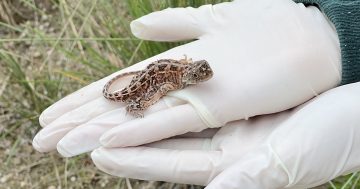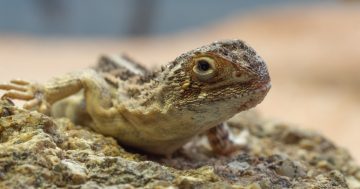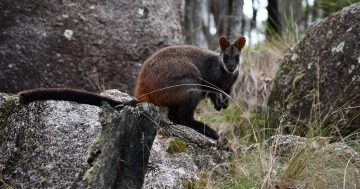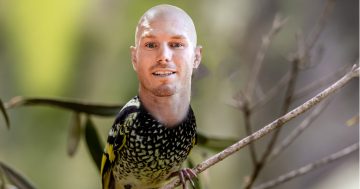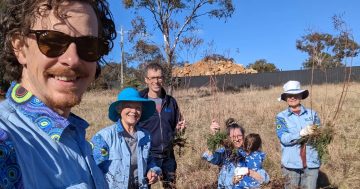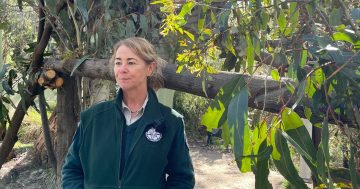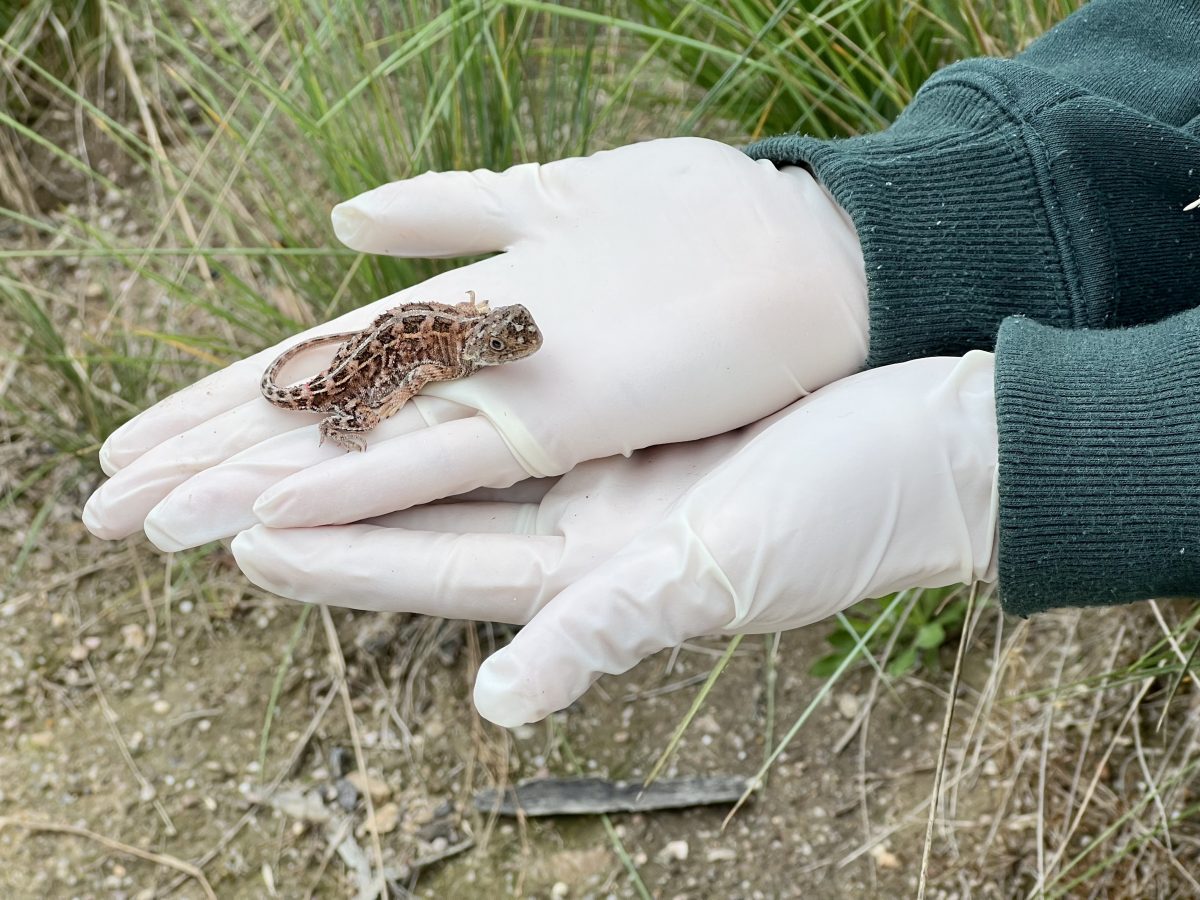
An adult Canberra Grassland Earless Dragon at the Tidbinbilla Nature Reserve. Photo: James Coleman.
Things are looking up for the Canberra Grassland Earless Dragon, six years into a project to bring the species back from its “critically endangered” status.
The lizard (Tympanocryptis lineata) was only classified as a separate species in 2019 when taxonomists reclassified the former (threatened) Grassland Earless Dragon into four species.
At the time, there were just three small populations scattered across temperate grasslands in the Majura and Jerrabomberra valleys, totalling no more than 40 hectares.
But come 2025, 81 earless dragons have been relocated back into the wild, according to Tidbinbilla Nature Reserve threatened species program manager Dr Sarah May.
In 2021, the southside nature reserve received funding from the ACT Government to establish a breeding colony.
“We started with 27 dragons in a brand-new facility to house and breed them,” Dr May says.
“We’ve bred 93 dragons so far at Tidbinbilla and 81 of these have been used in conservation translocations and provided for research to help us better understand how to recover this species in the wild.”
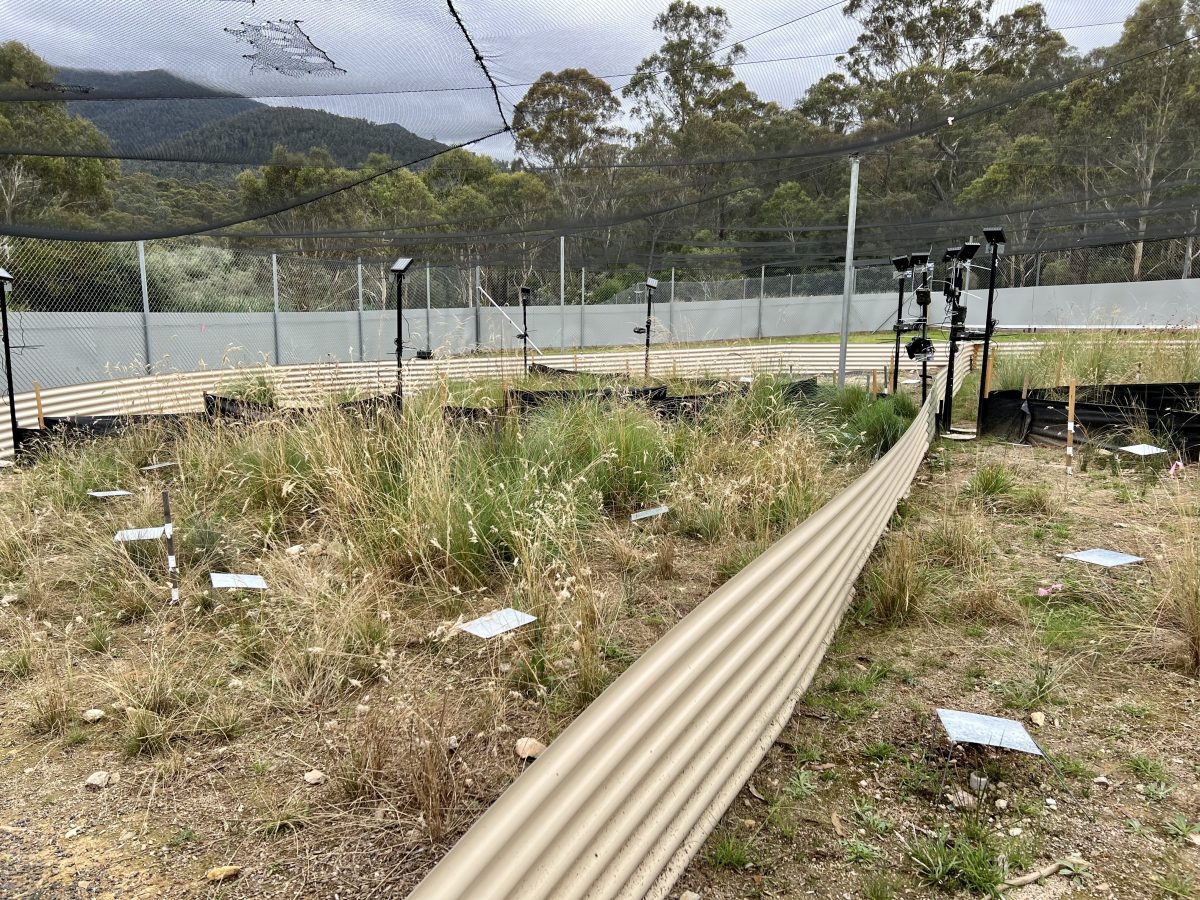
One of the ‘ring-tank’ enclosures at the Tidbinbilla Nature Reserve. Photo: James Coleman.
The fate of the dragon came up again recently during a protest near the Canberra Airport calling for the Federal Government to step in and cancel plans for a new road at the site because it runs through one of these habitats.
One advocate even donned a custom-made grassland earless dragon costume.
The airport initially received approval in 2019 to build this access road on the northern side of its site to connect Fairbairn to Majura Road, but when the airport had issues getting access to the land, these plans were revised.
The ACT Conservation Council and Friends of Grassland have said the new road would effectively cut the habitat in two and threaten the survival of the dragon.
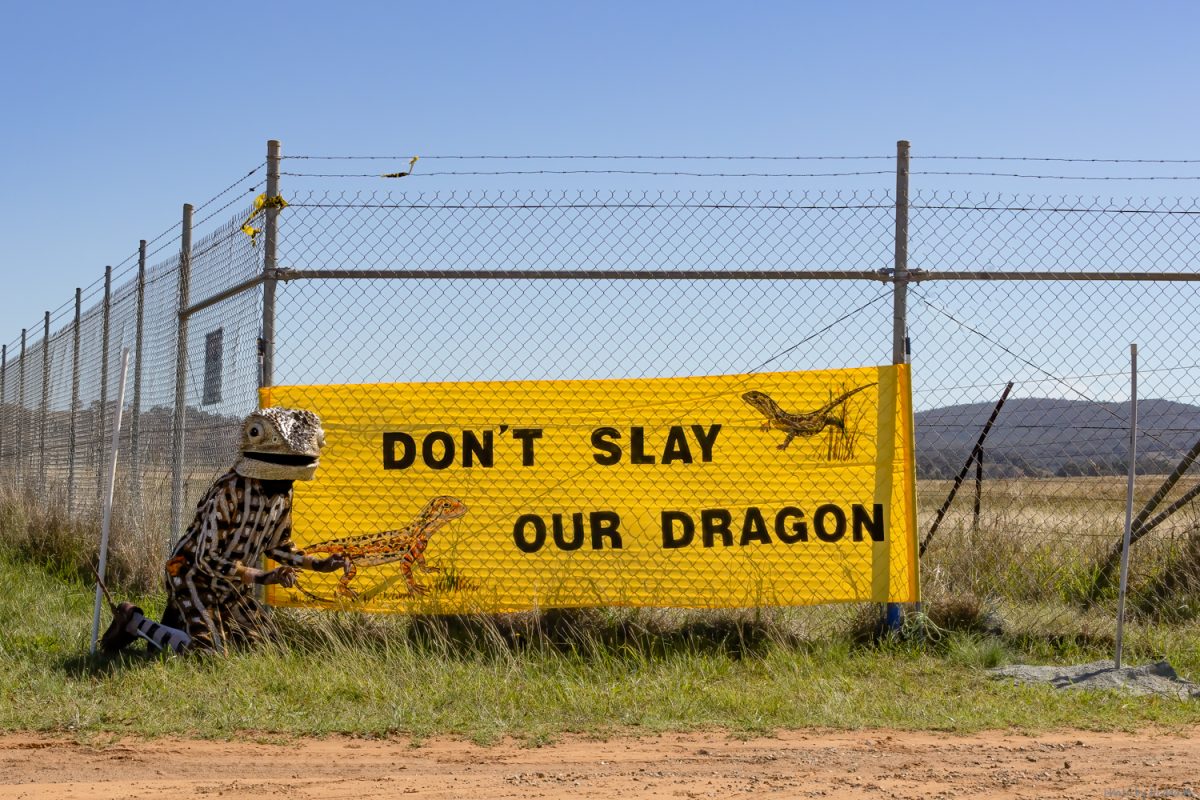
Protesting the Canberra Airport’s plans for an access road. Photo: Conservation Council ACT Region.
The Canberra Airport has defended the plans, describing them as an upgrade to an existing road and the result of no fewer than five environmental approvals over the years.
But unpersuaded, the Conservation Council is now calling for the Federal government to kill off what it calls a “zombie development”.
“Canberra Airport have had 15 years to demonstrate that they can build the road without slaying our dragon,” Dr Simon Copland said.
“Enough is enough. It is time to cancel this approval.”
Dr May says the dragons used to be “super-abundant” in native grasslands across the ACT, but the millennial drought caused their numbers to crash and “they haven’t managed to rebound” to the point they’re “almost undetectable”.
“Because the species has been reduced to very small numbers in a highly fragmented environment, the gene flow that would normally happen has stopped, so we’re finding the animals from these populations are experiencing high levels of inbreeding and losing invaluable genetic diversity,” she says.
A big part of Tidbinbilla’s work is making the populations more resilient through “genetic rescue”, or “mixing animals from different populations to increase genetic diversity”.
“We’re re-establishing a strong, robust species that’s got adaptive potential, which is critical for any species.”
The exact whereabouts of the new locations are “sensitive information”, but Dr May says the dragons are “doing really well”.
“We need to increase the size of our facilities so we can hold more animals, get more out there, and make sure we have the proper insurance population. Ultimately, we want this species back in the wild where it belongs.”
Tidbinbilla’s facility can hold 16 breeding pairs, but ideally, Dr May says they need to be able to hold at least 500 animals in captivity to “retain genetic diversity.”
“We’ve got a long way to go … It’s all dependent on funding. We’re just in a space at the moment where we’re seeking extra funding to support the recovery of this species.”
The Canberra Airport maintains the northern road project has been “rigorously assessed and approved by the relevant authorities” to ensure “no net loss of habitat, no fragmentation, and no increased risk to the Canberra Grassland Earless Dragon population”.
“We will continue to work closely with the department and recognised experts to focus on delivering a safe, secure, and sustainable solution for the region,” head of aviation Michael Thomson says.
